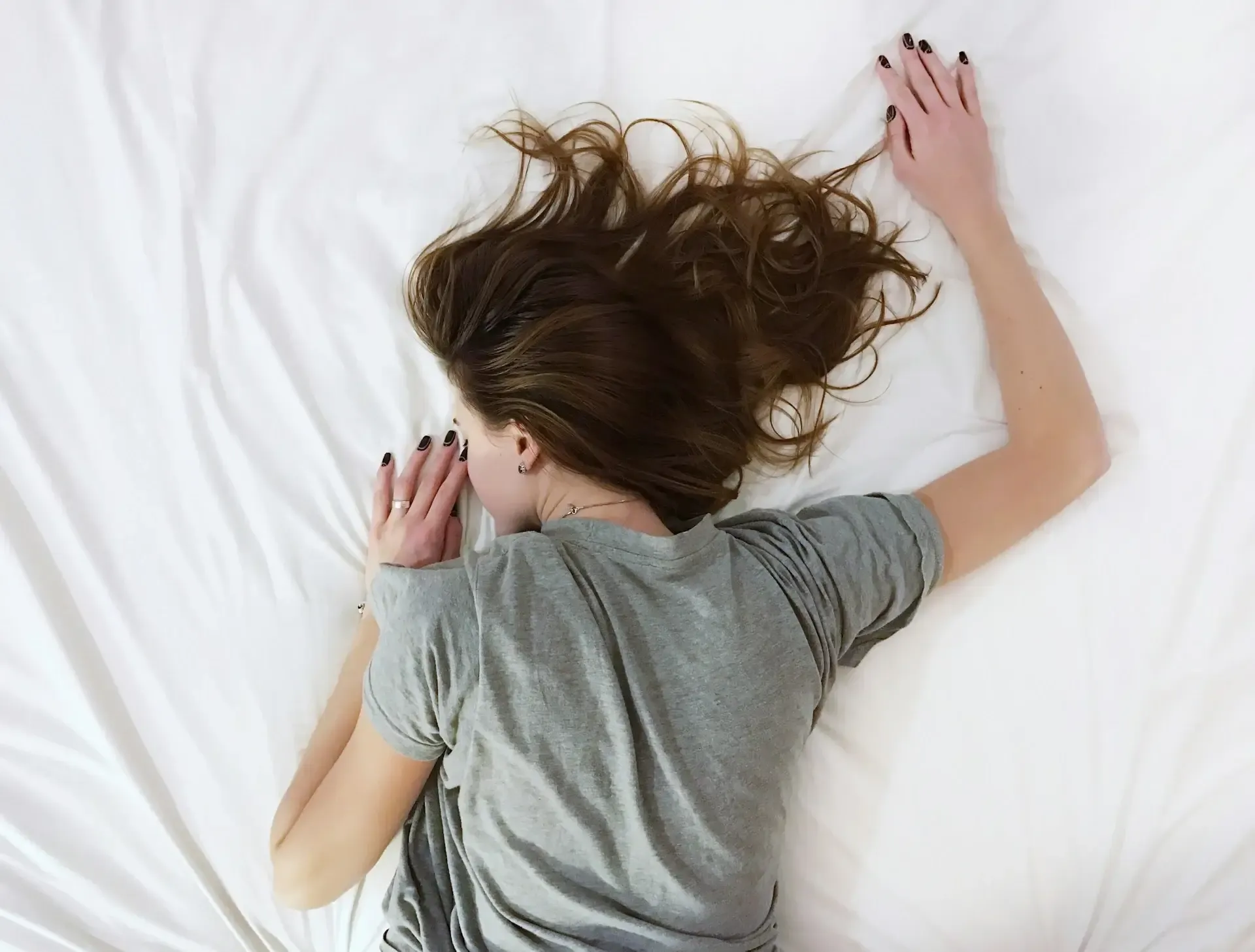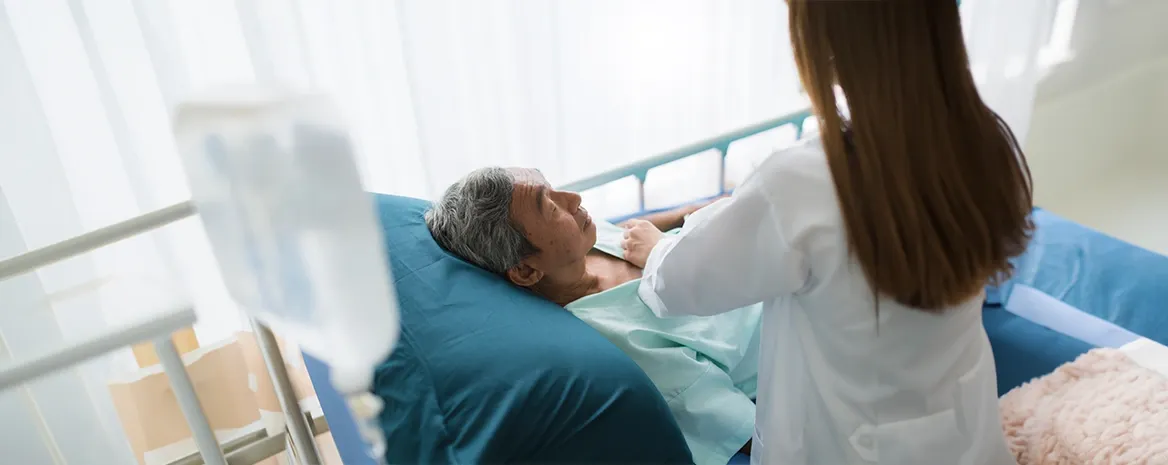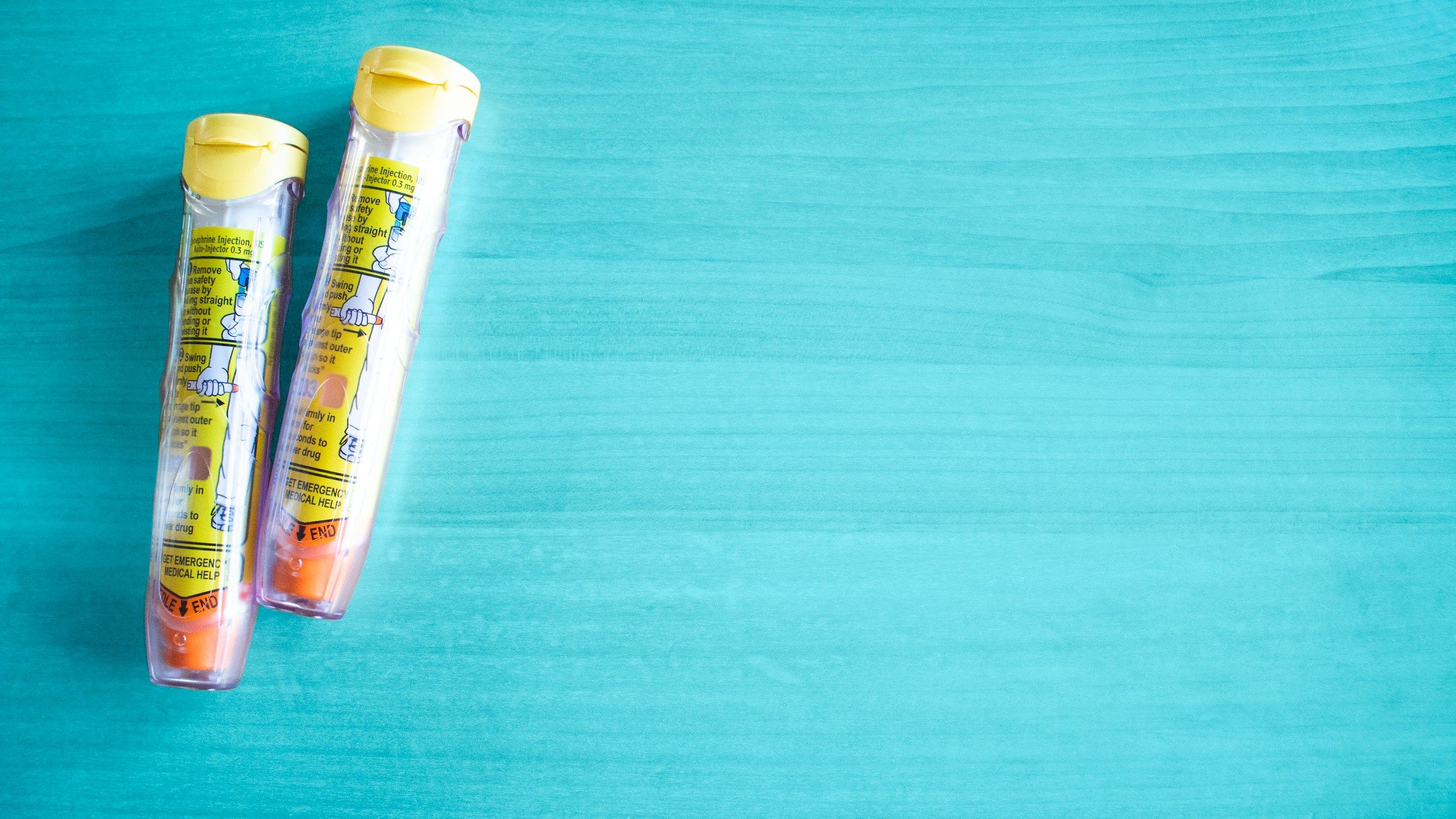Sleep Apnea Surgery in India: A Comprehensive Guide to Costs, Procedures, and Success Rates

Tired of feeling sluggish despite getting a full night’s sleep? Sleep apnea could be the hidden cause, robbing you of the quality sleep your body desperately needs. This causes repeated interruptions in your breathing while you sleep, often caused by a collapsed or partially blocked airway.
As a result, you can’t sleep properly and wake up tired and exhausted. While many people turn to CPAP machines and oral appliances for relief, surgery can be a more effective solution. And more people are turning to India for that purpose!
Why India? Affordable costs, experienced surgeons, and advanced tech make it one of the top choices for sleep apnea treatment worldwide.
In this blog, we’ll explore the types of sleep apnea surgery in India, their costs, success rates, and why more people are choosing India for their treatment. Ready to breathe easier? Let’s dive in!
When is surgery for sleep apnea recommended?
Most people start with non-surgical treatments like CPAP (Continuous Positive Airway Pressure), oral appliances, or lifestyle changes. But when these don't work, surgery becomes an option.
Surgery is typically recommended for:
-
Moderate to severe OSA
-
Anatomical issues like enlarged tonsils, deviated septum, or jaw structure problems
-
CPAP intolerance or failure
Surgery helps by widening or stabilizing the airway, making breathing easier, and restoring sleep quality.
How much does sleep apnea surgery cost in India?
One of the main reasons people travel to India for sleep apnea treatment is the cost advantage. Here, you get access to internationally accredited hospitals, skilled surgeons, and cutting-edge surgical techniques—at a fraction of the price compared to the U.S., U.K., or Australia.
In India, the exact cost depends on which type of surgery you need, the hospital you choose, and the complexity of your condition. But to give you a general idea, here’s a breakdown of average costs for different types of sleep apnea surgeries:
| Types of sleep apnea surgery | Cost in India (USD) |
|---|---|
| Tonsillectomy | $900-$1,771 |
| Septoplasty | $1,771 |
| Uvulopalatopharyngoplasty (UPPP) | $4,130 |
| Inspire Therapy | $14,172 |
| Maxillomandibular Advancement (MMA) | $7,000–$15,000 |
| Genioglossus Advancement (GA) | $3,000–$5,000 |
| Robotic Sleep Apnea Surgery | $4,500–$5,000 |
Contrary to this, sleep apnea surgery in the U.S. can cost you around $10,000 to over $100,000. That’s 2 to 10 times more than what you'd pay in India for the same level of care.
Plus, in India, many hospitals offer all-inclusive packages that cover everything from surgeon and hospital fees to diagnostic tests, medications, and follow-ups.
If you’re coming from overseas, you’ll also need to consider travel, accommodation, and recovery time. But even after factoring in those extras, the total cost still remains significantly lower.
And if you’re unsure where to start or how to find the right surgeon or hospital, Quality Care Global (QCG) can help. We guide you toward the most suitable and affordable treatment options—without compromising on quality or safety.
Why choose India for sleep apnea surgery?
India offers the perfect mix of affordability, skill, and technology.
Here’s Why:
-
Affordable for many
-
Highly experienced ENT and maxillofacial surgeons
-
Hospitals with NABH & JCI accreditations
-
Advanced tools like 3D sleep imaging, robotic systems, and Inspire implants
-
English-speaking medical staff
-
Short wait times
Types of sleep apnea surgery in India
India offers a variety of surgical options for treating sleep apnea. These procedures are performed by ENT specialists, oral surgeons, or sleep medicine experts.
Depending on where the blockage is, your doctor might suggest one or a combination of the following:
1. Uvulopalatopharyngoplasty (UPPP)
Uvulopalatopharyngoplasty (UPPP) is a common surgery for treating obstructive sleep apnea. During the procedure, doctors remove extra tissue from the back of your throat, including the soft palate, uvula (the dangly part), and sometimes the tonsils.
This helps open up your airway, making it less likely to collapse while you sleep. It’s often recommended for people with blockages in their throat.
2. Tonsillectomy
Enlarged tonsils are one of the most common reasons for sleep apnea in both kids and adults. A tonsillectomy removes these swollen glands from the back of the throat.
If your tonsils are visibly large or causing frequent infections, removing them can create more space in your airway, making it easier to breathe at night.
3. Septoplasty with turbinate reduction
If you have a crooked nasal septum or frequently blocked nose, it can make sleep apnea worse. Septoplasty corrects the shape of your septum (the wall between your nostrils) while turbinate reduction shrinks swollen tissue inside your nose.
This procedure doesn’t cure sleep apnea by itself, but it improves airflow and helps other treatments (like CPAP) work better.
4. Genioglossus advancement (GA)
Sometimes, the tongue is the problem. In certain people, the tongue falls backward during sleep and blocks the airway. GA surgery solves this by gently pulling forward the base of the tongue muscle, which keeps it from collapsing at night.
This procedure usually requires cutting a small part of the lower jawbone (without affecting teeth) and reattaching the tongue muscle in a new position.
5. Maxillomandibular advancement (MMA)
This is one of the most powerful and effective surgeries for severe sleep apnea. MMA involves moving both the upper (maxilla) and lower (mandible) jawbones forward. Doing this pulls the tongue and soft tissues forward, opening the entire airway from nose to throat.
MMA is more invasive than other surgeries, but it has the highest long-term success rates, especially for people with jaw abnormalities or facial structure issues.
6. Orthognathic surgery
Orthognathic surgery, or jaw surgery, is meant for people whose jaw structure contributes to their sleep apnea. The surgery realigns the upper and lower jaws to help open up the airway, making breathing during sleep easier.
It's typically recommended for more severe cases of sleep apnea that haven’t responded to other treatments. Besides improving sleep, it can also enhance the appearance of the face.
7. Inspire therapy (Hypoglossal Nerve Stimulation)
Inspire is a newer, high-tech option for people who can’t tolerate CPAP. It’s a small implant placed under the skin near your chest and connected to a nerve in your tongue.
When you sleep, it gently stimulates this nerve to keep your tongue from collapsing and blocking your airway. You turn it on with a remote before bedtime and forget it’s even there.
8. TORS (Transoral robotic surgery)
TORS is a minimally invasive robotic surgery done entirely through the mouth. It’s especially effective for people who have obstructions at the base of the tongue or lateral walls of the throat, areas that are difficult to reach with traditional tools.
Using robotic arms, the surgeon removes excess tissue without needing external cuts.
Note: TORS often includes or overlaps with other procedures like tongue base reduction, so some techniques may be combined.
Robotic systems used in sleep apnea surgery
Robotic-assisted surgeries are becoming more common in Indian hospitals, especially for treating complex cases of sleep apnea. These systems give surgeons better visibility, accuracy, and control, especially when working in hard-to-reach areas like the tongue base or throat.
Da Vinci surgical system
The Da Vinci robot is one of the most popular robotic platforms worldwide. It gives surgeons a high-definition 3D view and precise hand control, even in tight or deep areas of the throat.
In sleep apnea cases, it’s commonly used for:
-
Uvulopalatopharyngoplasty (UPPP)
-
Tongue base surgeries
-
Combined multilevel procedures
This system makes it easier to perform surgeries with delicate tissue handling, reducing trauma. This, in turn, results in:
-
Better accuracy in deep-tissue areas
-
Lower risk of complications
-
Speeds up healing
Versius Robotic System
The Versius robot is a newer addition to Indian hospitals. It’s smaller, more portable, and more cost-effective than the Da Vinci system. That means more centers, even outside metro cities, can offer robotic sleep apnea surgery.
-
Lower operational costs for hospitals
-
Growing adoption in tier-1 Indian cities
-
Equally effective for soft palate and tongue base surgeries
Latest sleep apnea procedures in India
Several new surgical techniques developed or refined in India are gaining international attention for being more effective and less invasive.
Barbed suspension bridge pharyngoplasty
A breakthrough technique pioneered by Indian surgeons, this procedure targets the collapse of the middle part of the throat.
Instead of cutting muscles or tissue, this technique uses barbed sutures to gently lift and support the soft palate like a suspension bridge. The stitches hold things in place and allow the airway to stay open without major trauma.
It’s less invasive and offers long-term results, especially for patients with structural airway collapse behind the mouth.
“The new technique is much superior to previous techniques like radio-frequency ablation and Plasma/Coblation technique,” says Dr. Vikas Agrawal, a leading sleep surgeon in India.
Multilevel surgery
Sometimes, sleep apnea isn’t caused by a single blockage. For these cases, doctors may recommend multilevel surgery—a custom mix of 2 or 3 procedures that treat different problem areas.
For example, a person may need:
-
Septoplasty (to fix a deviated nose)
-
UPPP (to widen the throat)
-
Genioglossus advancement or tongue base reduction (to control tongue collapse)
Combining surgeries, like barbed palatopharyngoplasty with coblator-assisted midline glossectomy, can be highly effective for moderate-to-severe OSA. In a 2024 study, patients saw significant improvements in sleep parameters, including:
-
62.5% overall surgical success rate (Sher criteria)
-
Significant drop in apnea-hypopnea index (AHI)
-
Improved oxygen levels and reduced snoring
-
Better quality of life scores post-surgery
The sleep apnea surgery process in India
Thinking about getting sleep apnea surgery in India? Here's how the journey usually goes:
-
The first step is an online consultation. A sleep specialist or ENT surgeon reviews your sleep study reports, medical background, and symptoms.
-
Sometimes, a repeat sleep study (polysomnography) is done locally in India to confirm your current condition.
-
A CT scan or MRI follows to map your airway. This helps your surgeon identify exactly where the blockage is happening.
-
Based on your anatomy and severity, a custom surgical plan is created just for you.
-
On the day of surgery, the procedure is done under general anesthesia. Most surgeries are completed within a few hours.
-
You’ll likely stay at the hospital for 1 to 3 days, depending on how extensive the surgery is.
-
After that, follow-up appointments, often remote, help in your recovery.
How to choose the right hospital or surgeon in India?
Picking the right place and person for your surgery makes a huge difference in your results and experience. Here’s what to look for:
-
Board-certified ENT or sleep surgeons who specialize in sleep apnea procedures
-
Hospitals that are NABH- or JCI-accredited, ensuring high standards of care
-
Access to in-house sleep study labs and imaging
-
Strong post-op care and support services
-
Centers located in top medical hubs like Delhi, Mumbai, Bangalore, Chennai, and Hyderabad, known for their world-class care, advanced technology, and highly experienced specialists.
Need a hand finding the best care without the stress? We at QCG make it easy. From finding the right surgeon to managing appointments and travel, we help you plan your treatment in India—affordably and with confidence.
Is sleep apnea surgery painful?
It’s not painless, but it’s manageable.
-
Most surgeries are under general anesthesia
-
Expect a sore throat, swelling, or mild discomfort for 3–7 days
-
Pain is usually well-controlled with medications
Minimally invasive and robotic techniques reduce trauma, bleeding, and downtime.
Is sleep apnea curable with surgery?
Yes, in many cases. Especially for people with mild to moderate OSA due to specific anatomic obstructions.
-
Mild/moderate OSA: Often curable with a single or combined surgery
-
Severe OSA: May still need CPAP, Inspire, or additional help
Success depends on your anatomy and sleep study results. Always consult a sleep surgeon.
What is the success rate of sleep apnea surgery?
The success of sleep apnea surgery can vary depending on the procedure and your individual case. Here are the general success rates:
-
Inspire therapy: Around 68%
-
Uvulopalatopharyngoplasty (UPPP): About 44% in long-term results
-
Maxillomandibular advancement (MMA): 86% of patients experienced improvement.
-
Genioglossus advancement (GA): About 53%
-
Multilevel surgery: About 60%
-
Orthognathic surgery: Highest, up to 90%
These success rates suggest that sleep apnea surgery can be very effective, but results may differ depending on the procedure and individual factors. Always consult your doctor to find the right solution for you!
Is sleep apnea surgery right for you?
If you've tried CPAP or other treatments without success, sleep apnea surgery could be a good option. It's especially helpful if you have specific physical issues like a blocked airway, enlarged tonsils, or a misaligned jaw. Surgery can provide a long-term solution for better sleep and overall health.
However, surgery isn’t for everyone. It’s most beneficial for people who have specific problems causing their sleep apnea. The best way to know if it’s right for you is to speak with a sleep specialist who can guide you based on your condition.
Is sleep apnea surgery safe in India?
Yes, sleep apnea surgery in India is safe. Many hospitals in India are internationally recognized and follow high standards of care. The country’s top surgeons are highly trained and use the latest technology to treat sleep apnea effectively.
If you choose the right hospital and surgeon, you can expect a safe, successful treatment. Just be sure to research your options and consult with professionals to make sure you’re in good hands.
Ready to explore your sleep apnea surgery options in India? Let us help you find the best care and affordable solutions!

